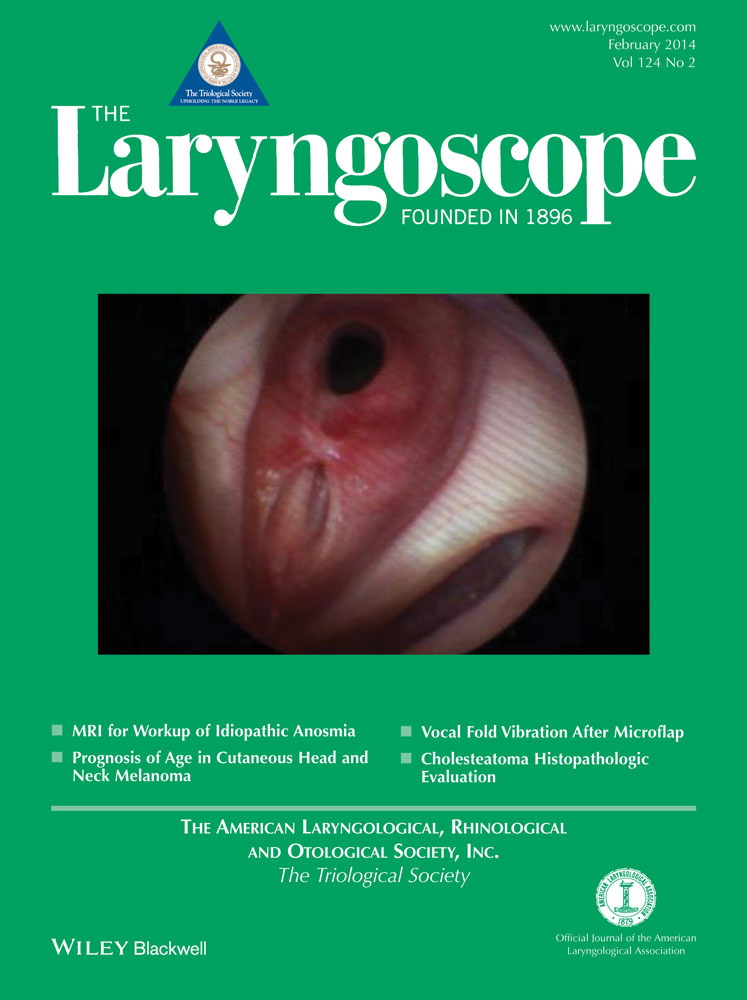A new treatment paradigm for trigeminal neuralgia using botulinum toxin type a
Presented as a poster at the Triological Combined Sections meeting, Scottsdale, Arizona, U.S.A., January 23–26, 2013.
Drs. Andrew Blitzer and David Sirois previously received grant funding to investigate the use of Botulinum toxin A in Trigeminal Neuralgia from Allergan, Inc. The authors have no other funding, financial relationships, or conflicts of interest to disclose.
Abstract
Objectives
To review the current data for the use of Botulinum toxin type A (BoNT-A) in trigeminal neuralgia (TN) and to describe the preferred injection technique of BoNT-A in TN. To propose a new treatment paradigm for TN incorporating the use BoNT-A.
Data Sources
MEDLINE and Google Scholar databases.
Review Methods
The current data on BoNT-A for TN were reviewed and analyzed for outcomes.
Results
Seven studies examining the use of BoNT-A were identified: Two randomized double-blind, placebo-controlled studies and five prospective case series. All studies found BoNT-A to be an effective treatment in the majority of patients; and the results of the two randomized double-blind placebo-controlled study showed significant benefit over placebo. The majority of studies used an intradermal or subcutaneous injection technique. The most common side effect was transient facial paresis.
Conclusions
BoNT-A offers a safe, effective, local treatment for TN that is nonablative in nature. BoNT-A should be considered in patients who have failed, become refractory to, or are unable to tolerate first-line pharmacologic treatments.
Level of Evidence
N/A. Laryngoscope, 124:413–417, 2014




